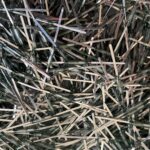The production of a Reed Switch requires many highly controlled process steps from Stamping to Sputtering to hermetic sealing done in Clean Rooms that comes from years of experience in the Reed Switch business. The following are the list of steps used in our production process.
Reed switch production involves a tightly controlled flow of process steps to ensure the optimal functionality and reliability of the final product. The processes are meticulously followed to manufacture high-quality reed switches that can be used in various industries such as automotive, telecommunications, and home appliances.
The production flow of a reed switch begins with the preparation of the basic raw materials, the reed blades. Blades are pressed from specially-selected alloys that possess desirable magnetic properties. The alloy is carefully chosen based on factors such as corrosion resistance, durability, and sensitivity to magnetic fields and matching coefficient of thermal expansion with the glass tube. Once the alloy is obtained, it is then pressed into thin, flexible reed blades through precision stamping. These blades are crucial as they act as the switch contacts.
After the reed blades are prepared, the next step in the production process is the cleaning and assembly. The blades are thoroughly cleaned to remove any impurities by degreasing, that could impact their performance. Then they go through a controlled annealing process to remoe any work hardening that came along with the stamping.
After this, the blades are loaded on to special jigs and taken for sputtering. The chamber is evacuated by a cryogenic pump to approximately satellite level vacuum of space and a proprietary multi-layer Ruthenium coating is done using a water cooled Magnetron and 99.95% purity Ruthenium target. The sputtered blades are then baked out to burn off an surface impurities.
Then the reed blades are aligned on the production heads, and are encapsulated within a glass tube to provide electrical insulation and protection from external elements. The glass tube is carefully selected to maintain the desired dimensions and is sealed to prevent any moisture or dust from entering. This step is critical to ensure the longevity and reliability of the reed switch.
Following encapsulation, the reed switch goes through a series of quality control tests. These tests evaluate various parameters such as contact resistance, operating AT, and sensitivity to magnetic fields. Only the switches that meet the predetermined specifications are approved for further processing, while any non-conforming switches are rejected.
Finally, the approved reed switches undergo a final inspection, packaging, and labeling before they are ready for shipment to customers. The packaging process ensures proper protection during transportation, while labeling provides essential information for identification and usage. Reed Switches are also usedin the production of Reed Sensors, Magnet Sensors and Thermal Cut outs.
In conclusion, the production flow of reed switches involves a well-defined process that includes raw material preparation, cleaning, assembly, encapsulation, quality control tests, and final packaging. Following this flow meticulously ensures the production of reliable and high-quality reed switches that fulfill the requirements of various industries.
Nickel-Iron Wire Inspection
|
|
Reed Switch wire drum Wire inspection of Nickel-Iron alloy must precede reed blade pressing to ensure quality is good. The alloy wire...Continue reading
Feb 26, 2024 |
Reed Blade Pressing
|
|
Hydraulic Press Reed pressing is done by selecting a special alloy of Nickel-Iron called 52-alloy which is chosen for the purpose of...Continue reading
Feb 26, 2024 |
De-greasing of Pressed Reed Blades
|
|
Ultrasonic De-greasing After the pressing operation of Reed Blades, operators must clean off pressing dust, oil, and other particles to...Continue reading
Feb 27, 2024 |
Annealing of Degreased Reed Blades
|
|
Annealing Pot After the degreasing and surface cleaning process, reed blades undergo annealing to remove magnetic remanence and improve...Continue reading
Feb 27, 2024 |
Sputtering of Annealed Reed Blades
|
|
Sputtering chamber Our Reed Switches rely on proper contact sputtering of Ruthenium, to ensure stable, durable electrical connections....Continue reading
Feb 27, 2024 |
Glass-to-Metal Sealing of Reed Switches
|
|
Sealing station Reed Switch Sealing involves using two sputter coated reed blades inserted into either ends a glass tube. The thermal...Continue reading
Feb 28, 2024 |
Lead-out Plating of Reed Switches

|
Lead-out Plating During the Reed Switch glass sealing process, Oxides are formed on the leads outside the glass seal area, which need...Continue reading
Feb 28, 2024 |
Dry Buzzing of Reed Switches

|
Buzzing of Reed Switches Dry buzzing stabilises the contact and also fixes or aligns any minor physical alignment defects. By operating...Continue reading
Feb 28, 2024 |
Sorting and Grading of Reed Switches

|
Sorting of Reed Switches Sorting and grading of reed switches is done after measuring each and every reed switch produced for almost up...Continue reading
Feb 28, 2024 |
